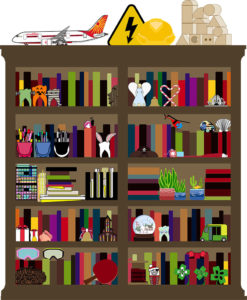
Ms. Ward’s “mental spatial time travel” can also be helpful in getting your child to organize and clean his/her room especially if your child has difficulty getting this done. One technique she mentioned was taking a picture of your child’s room after it has been cleaned and organized. You and your child can then sit down and study the picture of the clean and orderly room (see how the toys are arranged on the shelves, the clothes are folded and piled neatly in the cabinet and the bed sheets neatly covering the bed). Your child can then work on portions of the room and clean/organize it so that it looks the same way as the picture (either by copying the picture or doing it from memory). The picture helps the child to pre-imagine how the shelf (or cabinet etc.) will look like after he/s he fixes it

According to Ms. Ward, “90% of the time, we pre-imagine our plan, so that the minute we get into that space…we just think about carrying out the plan”. This technique to improve organization skills is certainly worth trying on your child!


